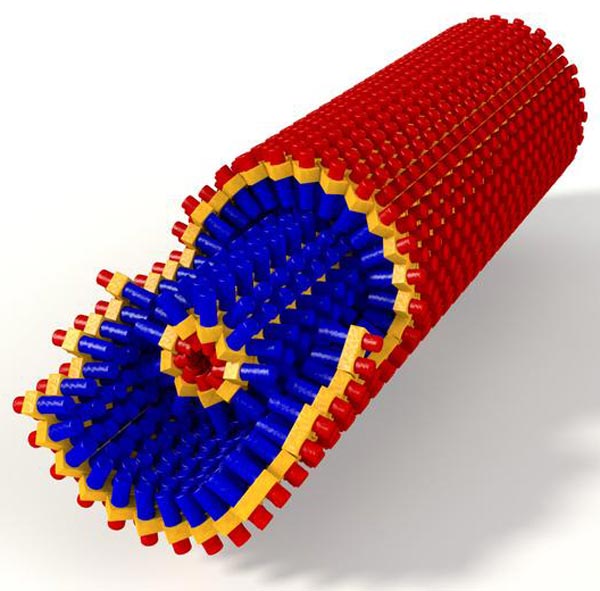The quantum physics of artificial light harvesting

Photosynthesis model system TU Wien
Plants and bacteria make use of sunlight with remarkably high efficiency: nine out of ten absorbed light particles are being put to use in an ordinary bacterium.
For years, it has been a pressing question of modern research whether or not effects from quantum physics are responsible for this outstanding performance of natural light harvesters. A team of European research groups, a collaboration between universities in Vienna, Ulm, Cartagena, Prague, Berlin and Lund, have examined these quantum effects in an artificial model system.
It was shown that the hotly debated quantum phenomena can be understood as a delicate interplay between vibrations and electrons of the involved molecules. The resulting theoretical model explains the experiments perfectly. The article was published in Nature Communications.
The studied artificial light harvester is a supramolecule, consisting of hundreds of thousands of light absorbing molecules, arranged in close proximity to one another and in an orderly fashion.
Such architecture puts these systems in between noisy living cells and strictly organized quantum experiments at low temperatures: supramolecules are still governed by the same quantum effects as natural photosynthetic systems, but without the noisy background that makes their investigation so difficult in biological systems.
The research team employed polarized light to isolate the desired quantum-dynamical effects. Studying such ordered systems does not only further our understanding of natural photosynthesis, it also helps us to appreciate the physical mechanisms necessary for energy-efficient, cheaper, more flexible and lighter photovoltaic cells.
Article reference: „Vibronic origin of long-lived coherence in an artificial molecular light harvester”
Picture download: http://www.tuwien.ac.at/dle/pr/aktuelles/downloads/2015/photosynthese
Media Contact
All latest news from the category: Physics and Astronomy
This area deals with the fundamental laws and building blocks of nature and how they interact, the properties and the behavior of matter, and research into space and time and their structures.
innovations-report provides in-depth reports and articles on subjects such as astrophysics, laser technologies, nuclear, quantum, particle and solid-state physics, nanotechnologies, planetary research and findings (Mars, Venus) and developments related to the Hubble Telescope.
Newest articles

High-energy-density aqueous battery based on halogen multi-electron transfer
Traditional non-aqueous lithium-ion batteries have a high energy density, but their safety is compromised due to the flammable organic electrolytes they utilize. Aqueous batteries use water as the solvent for…

First-ever combined heart pump and pig kidney transplant
…gives new hope to patient with terminal illness. Surgeons at NYU Langone Health performed the first-ever combined mechanical heart pump and gene-edited pig kidney transplant surgery in a 54-year-old woman…

Biophysics: Testing how well biomarkers work
LMU researchers have developed a method to determine how reliably target proteins can be labeled using super-resolution fluorescence microscopy. Modern microscopy techniques make it possible to examine the inner workings…





















